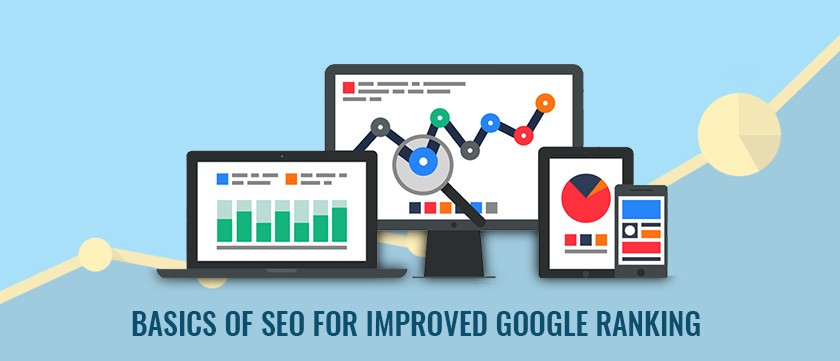
SEO Basics for Improving Website Ranking
In the vast, ever-changing world of digital marketing, Search Engine Optimization (SEO) stands as a cornerstone technique for anyone looking to enhance their website’s visibility and ranking on search engines such as Google, Bing, and others. SEO can seem complex and intimidating for beginners, but understanding its basics is crucial for any webmaster or marketer aiming to improve their site’s performance. Here’s a comprehensive guide to the fundamentals of SEO and how you can utilize them to boost your website's ranking.
1. Understanding SEO
SEO involves optimizing a website to improve its visibility when people search for products, services, or information related to the business in search engines. The goal is to get a site to rank higher in the search engine results pages (SERPs), which leads to more organic (non-paid) traffic.
2. Keyword Research
Keywords are the foundation of SEO. They are the words and phrases that users type into search engines. Understanding the keywords your target audience uses is crucial to your SEO strategy.
Tools for Keyword Research: Use tools like Google Keyword Planner, SEMrush, Ahrefs, and Moz Keyword Explorer to find relevant keywords. These tools provide insights into the keywords' search volume, competition, and relevance.
Long-tail Keywords: These are longer and more specific keyword phrases that visitors are more likely to use when they’re closer to a point-of-purchase or when using voice search. They generally have a lower search volume but higher conversion rates.
3. On-Page SEO
On-page SEO involves optimizing individual web pages in order to rank higher and earn more relevant traffic in search engines. Here’s what it primarily focuses on:
Title Tags: These are the clickable headlines displayed on search engine results pages. They should be descriptive, relevant to the page’s content, and within 50-60 characters to ensure they display properly on SERPs.
Meta Descriptions: These provide a brief summary of the page content. While meta descriptions don’t directly influence rankings, a well-crafted meta description can improve the click-through rate (CTR).
Header Tags: Using header tags (H1, H2, H3, etc.) helps organize content on a page and assists both search engines and readers in understanding the structure and sections of your content.
URL Structure: URLs should be concise, include target keywords, and be structured in a way that is easy for search engines to crawl.
Alt Text for Images: Since search engines can’t read images, alt text helps them understand what the image is about. This can boost your website’s SEO and accessibility.
4. Content Quality
Content is king in SEO. The quality, originality, and relevance of your content are significant factors in attracting and retaining website visitors.
Creating Value: Ensure that the content addresses the needs and questions of your audience. It should provide value, which encourages visitors to stay longer on your site and interact with more content.
Content Freshness: Regularly updating your website with new, relevant content can give you a boost in the SERPs. Google sees active sites as more likely to be relevant to users.
Use of Keywords: Incorporate your target keywords naturally into your content, including the title, headers, and throughout the body. However, avoid keyword stuffing as it can negatively impact your SEO.
5. Off-Page SEO
Off-page SEO refers to actions taken outside of your own website to impact your rankings within SERPs. The main technique used is link building.
Backlinks: These are links from other websites to your site. Backlinks from high-authority and relevant websites can significantly boost your site’s credibility and ranking.
Social Media: While social media links don’t directly contribute to SEO, social media can help amplify your content's reach, driving more traffic to your site.
Guest Blogging: Writing posts for other relevant blogs can help you gain backlinks and access to a broader audience.
6. Technical SEO
Technical SEO refers to the process of optimizing the infrastructure of your site so it can be easily crawled and indexed by search engines.
Mobile-Friendliness: With mobile devices accounting for approximately half of web traffic globally, having a mobile-friendly website is essential.
Site Speed: Faster sites provide a better user experience and are favored by search engines. Optimize images, leverage browser caching, and reduce redirects.
Secure Sockets Layer (SSL): SSL is a security technology that creates an encrypted link between a web server and a browser. Websites with SSL are given preference by Google.
7. Monitoring and Analysis
Finally, to improve your SEO efforts continuously, you must track and analyze your results.
Google Analytics: It helps you monitor your site’s traffic, user behavior, and other key metrics that indicate your SEO performance.
Google Search Console: This tool allows you to view your site’s performance in Google search, see which keywords are driving traffic, and identify any crawl errors that might be preventing pages from being indexed.
SEO is a long-term strategy. While you may not see immediate results, consistent effort in optimizing your website according to these basic principles can dramatically improve your ranking over time. Remember, the world of SEO is always evolving, so staying updated with the latest trends and algorithms is crucial.
Digital Artisan | Combining Design and Technology to Create Powerful Visual Solutions
2wGreat insights! I recently came across a resource that dives deep into Website ranking. Thought it might be valuable for you! Here's the link: https://www.linkedin.com/posts/salespanel_boost-rankings-traffic-with-website-positioning-activity-7188417973706022912-6YN7?utm_source=share&utm_medium=member_desktop